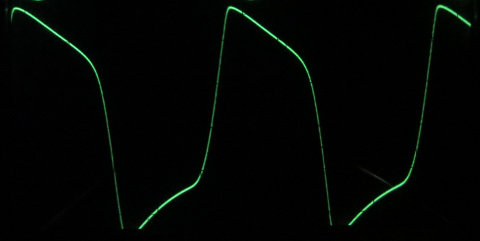I was building up another JSLF and before I finished populating the board I wanted to confirm how suitable the diode and moulded choke were.
With a 330R resistor tacked on the output for a 10mA load I measured a current of 68mA for an efficiency of about 33%. This is well short of the roughly 80% suggested by the datasheet. The 330R was swapped to one giving a load of 4uA, the sleeping micro's consumption. The overall efficiency with the 4uA load was 30%.
When I apply the duty cycle of the current drawn I get a disappointing 33% result.
Swapping the schottky diode with some other general purpose shottky types showed no real change. I put some fast recovery type diodes on the list of things to order.
Turning my attention to the inductor I swapped in a 22mH power inductor. This gave an immediate improvement. Without boring you with the finer details the overall efficiency was now 74%.
I was stunned that the moulded choke was so poor yet the life I was getting was amazing. I didn't have many of those 22mH power inductors and they were too large an inductance according to the application notes in the datasheet so I chose a physically large and plentiful in my parts bin 100uH as the new standard.
Will the doubling in efficiency lead to twice the battery life? It's too early to tell but after one day the battery voltage of the updated JSLF with a fresh AG3 battery is ~50mV higher than the previous 4 trials.
There is one more change to mention.
Since the boost IC has an enable pin can it should be possible to get a few more percent in overall efficiency by only enabling the Boost IC when the LED and Micro are active. When the micro is asleep and the led is off the sleep current can easily be met by the capacitor on the 3.3V rail. This avoids the 30% efficient state for 99.5% of the overall flash cycle and should lift overall efficiency to around 80%.
So I now have a desk with 6 flashing LEDs nearby. In a week I should see the impact of these changes.
Update:
After 2 days I wasn't seeing the improvement I expected. I initially assumed it was battery characteristics but after the curves between trial 5 and 6 kept diverging I investigated and found that I was enabling the boost during the inefficient led off time period.
With that fixed I expect to see curve (C) develop into a plateau and cross above curve (B) in due course.
